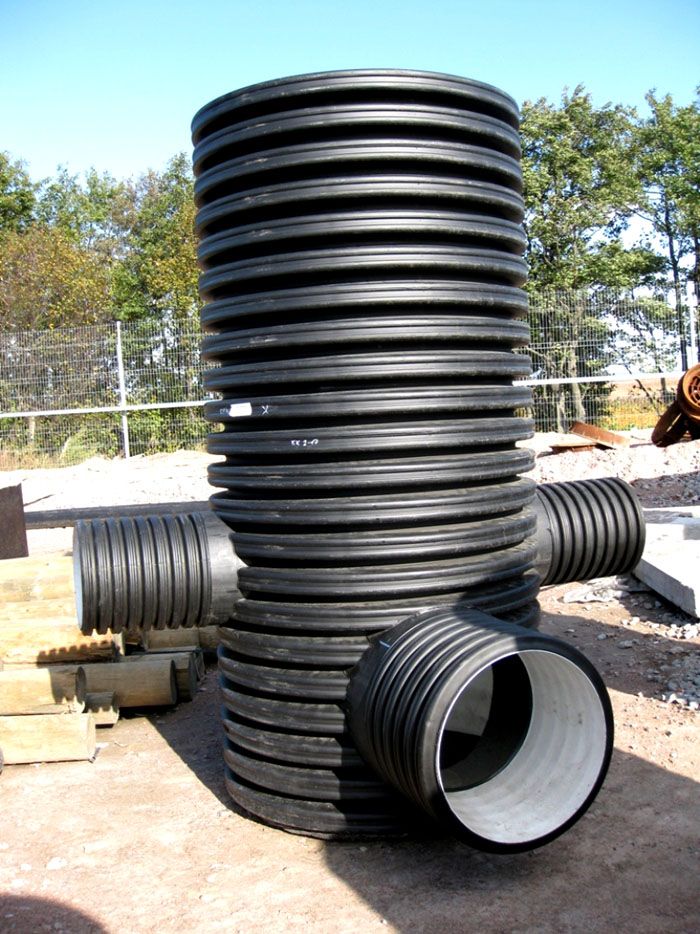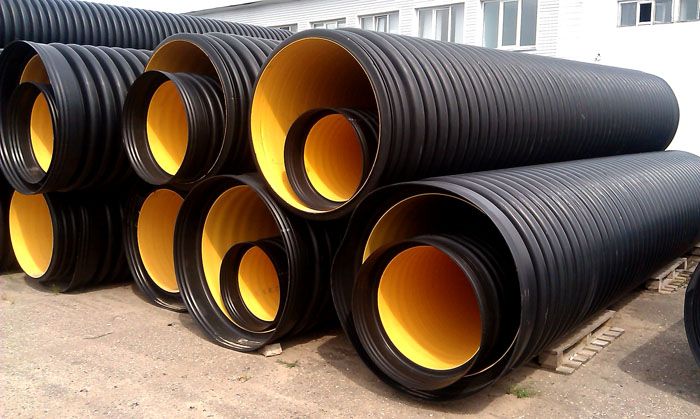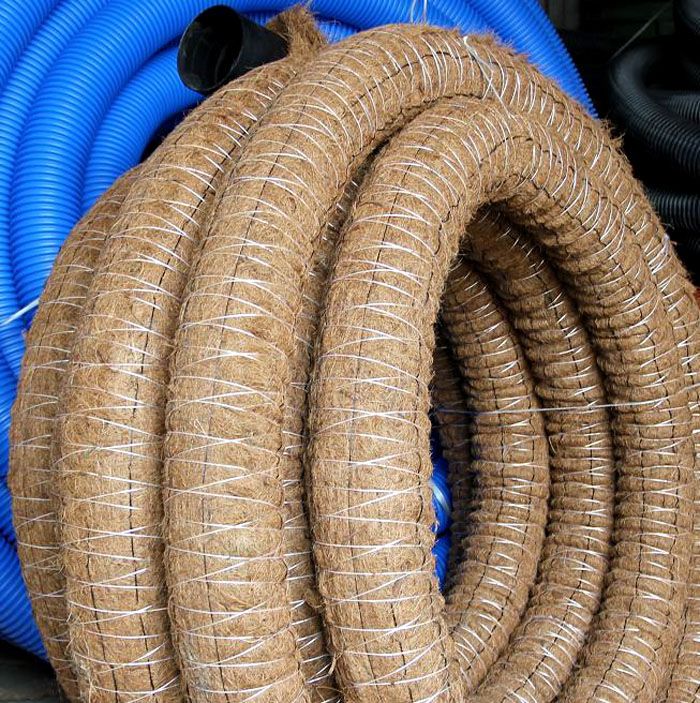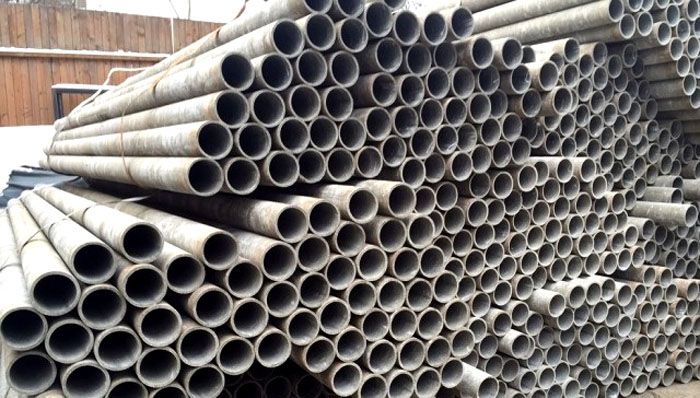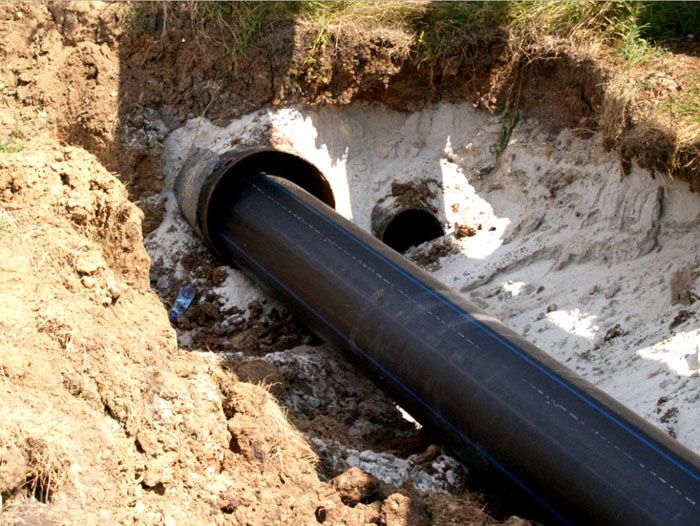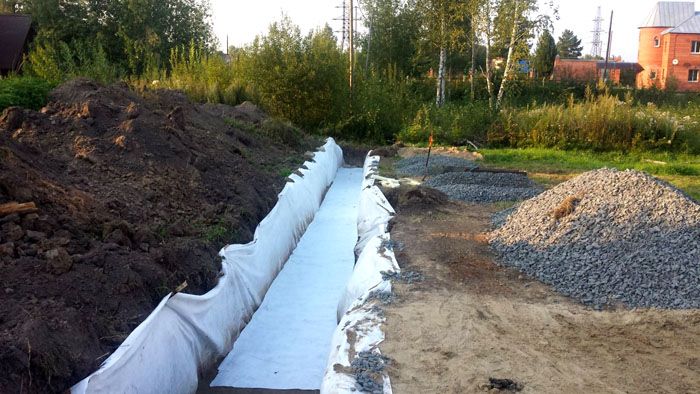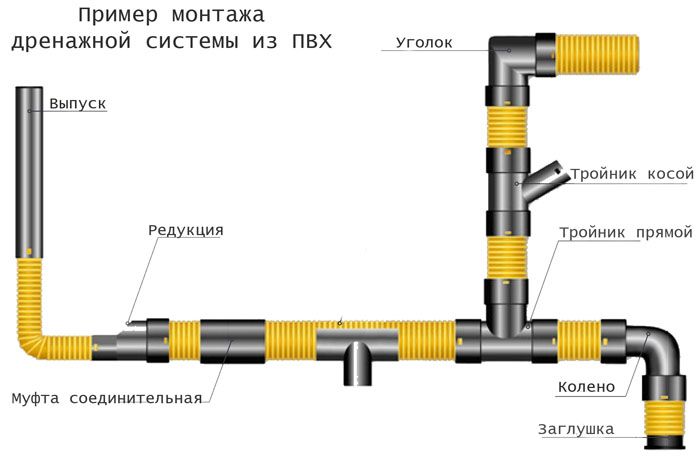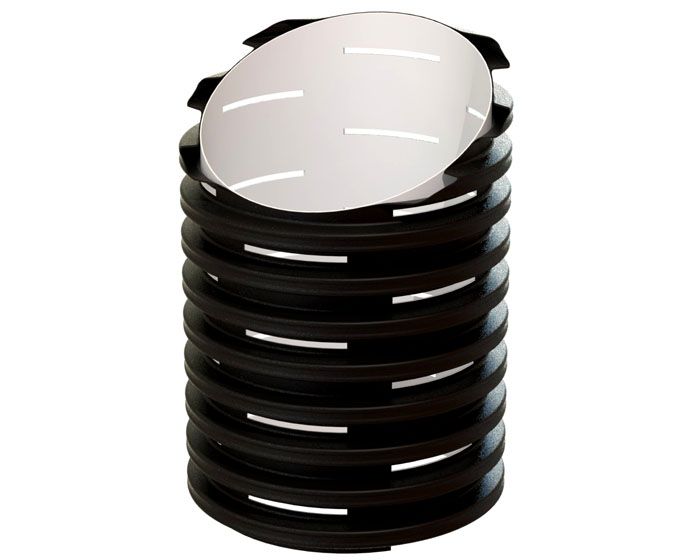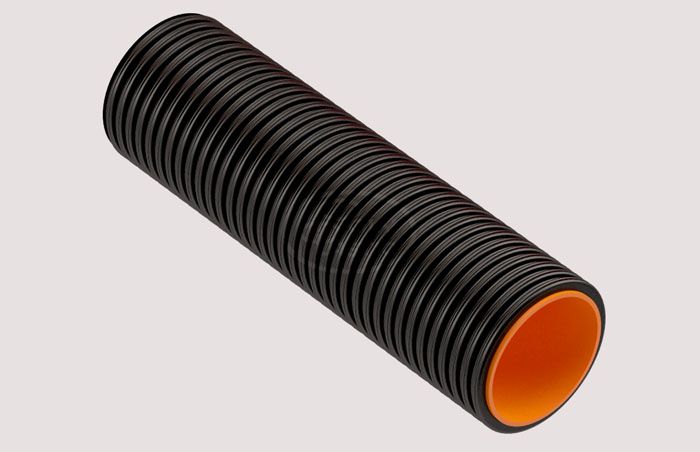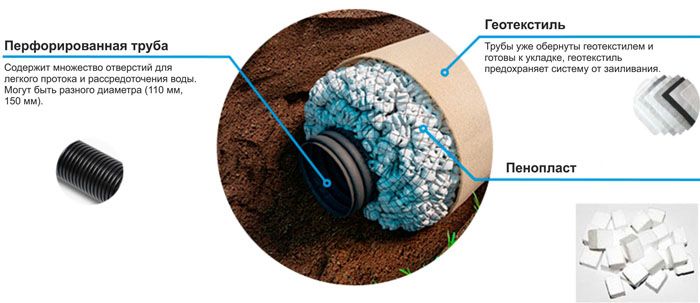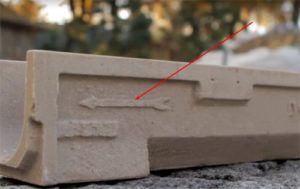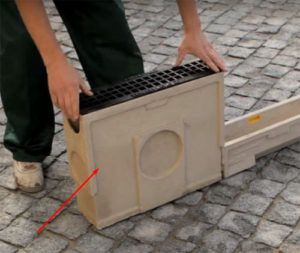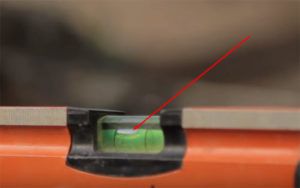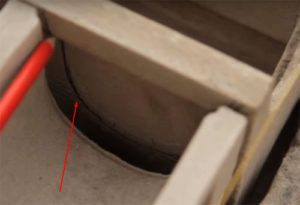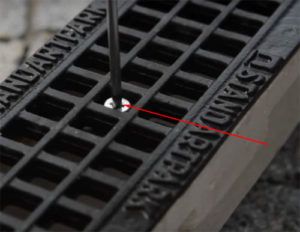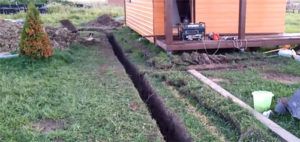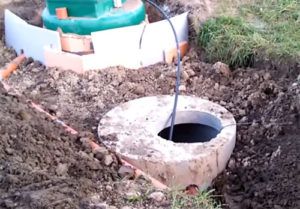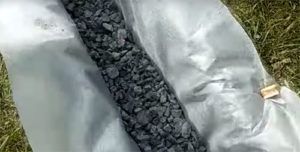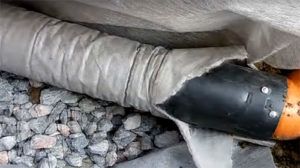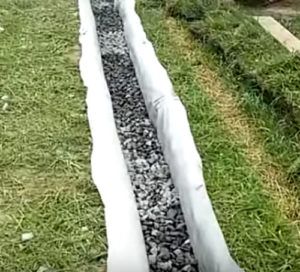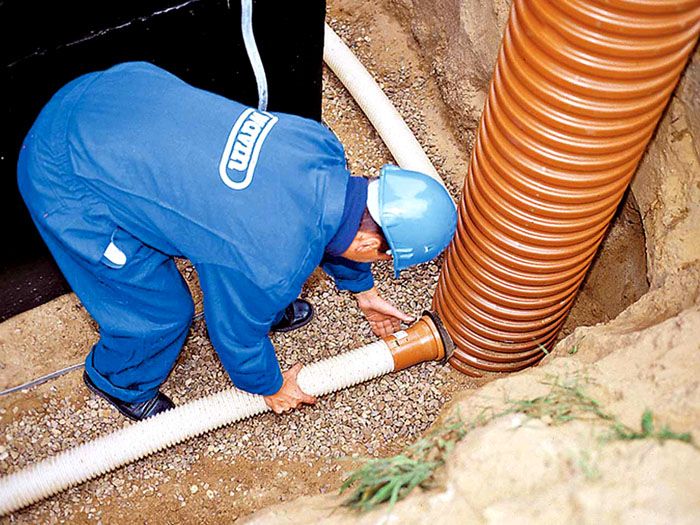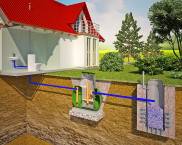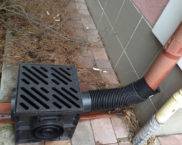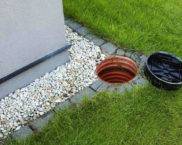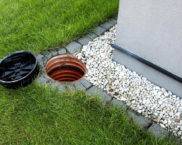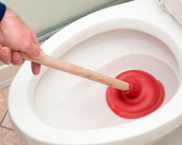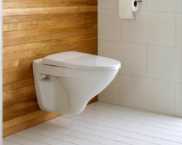Drainage pipes for groundwater drainage: remove excess moisture from the site
Not every landowner has an ideal site. More often in spring or autumn, during a period of heavy rainfall, the yard, and the garden area, begins to flood, which is very harmful for various vegetable and fruit crops. This is where the difficulties begin. The owners dig channels, trying to remove as much moisture from the site as possible, which does not always help. Drainage pipes for the drainage of groundwater can be a way out. With their correct location, you can forget about such a problem. But today we will consider how to place them, what they can be and whether it is possible to make them from what is left of the repair.
The content of the article
- 1 What are drainage pipes for and what is their principle of operation
- 2 Drainage pipes for groundwater disposal: basic technical and geometric characteristics
- 3 Materials for the manufacture of drainage systems for groundwater disposal
- 4 The choice of material by the type of soil of the site
- 5 Features of drainage corrugated pipes with geotextile
- 6 What is perforation of drainage lines for?
- 7 Manufacturing companies and features of their products
- 8 How to perform a drainage system in your area
- 9 Where to buy drainage pipes: the average cost in the Russian market
- 10 Finally
- 11 Video: site drainage, tips and tricks
What are drainage pipes for and what is their principle of operation
Drainage pipes allow the drainage of groundwater from the site or adjacent territory. They are corrugated, thick, perforated hoses that are dug in at a certain depth. The principle of operation of pipes for drainage of groundwater simple enough. As you know, water always goes where the passage is easier.This law of physics covers many areas and is never violated. Having seeped through the perforation, moisture freely rushes along the pipe to where the master directs it. Thus, water does not need to seep through the soil. As a result, the soil is drained.
Good to know! If water stagnates in a certain place in the garden in the fall, then the soil, not receiving the necessary oxygen, begins to die off. As a result, next year in this place the harvest will be negligible, or there will be none at all.
Drainage is of particular importance for foundation residential building. With an excess of moisture, the base of the house will quickly collapse, which will negatively affect the building itself.
Drainage pipes for groundwater disposal: basic technical and geometric characteristics
The main difference between such products is the presence or absence of perforations in them. It is for this parameter that pipes for the removal of groundwater are chosen. In one case, the removal of excess moisture from the soil is required (perforation is used), and in the other, it is simply to carry out the removed moisture, not allowing it to be absorbed into the soil (in this case, the pipe will be solid).
The diameter of the drain is also important. It should be understood that the larger the pipe, the more intensive the moisture removal will be. On the other hand, if the product is not perforated and is used only as a diverting element, it makes no sense to use too large a diameter - it will simply be irrational.
And yet, of greater interest is the material from which perforated pipes for drainage are made. There are a lot of such materials, and each of them has both its advantages and disadvantages and specific areas of application. Let's consider this issue in more detail.
Materials for the manufacture of drainage systems for groundwater disposal
The main materials from which such products are made are:
- PVC;
- HDPE;
- Ceramics;
- Polypropylene;
- Asbestos cement (chrysotile cement).
A separate item can be called coconut-wound pipes, which have a higher cost. But knowing the materials of manufacture is not enough. It is necessary to understand what are the differences between them, and in which case the use of a particular pipe is justified.
Polyvinyl chloride and polyethylene: material advantages
Drainage pipes made of such materials are used only to drain water, they do not collect it themselves. Most often, such products are made in the form of an ordinary pipe, but recently they began to produce flexible hoses, provided that their diameter is large enough. Corrugated drainage PVC pipes with a diameter of 400 mm or more are now quite common.
Good throughput characteristics of such products are achieved due to the smoothness of the inner walls and the resistance to corrosion of the materials from which they are made. Such drainage pipes have a fairly long service life and are easy to install. Many home craftsmen, with such products at hand, make perforated drainage pipes from them with their own hands. To do this, small holes are drilled in a chaotic manner along the entire length of the upper part. As a result, water flows freely through the lower part of the pipe, and excess moisture from the soil enters the drainage through the perforation made from the top.
The main advantages of plastic pipes are not only their long service life, but also the ease of installation. You can handle it with your own hands without any construction equipment.
Ceramics is a more whimsical material
Ceramic drainage pipes are gradually becoming a thing of the past.The reason for this is not even their high cost, but rather the inconvenience of installation and less durability, compared to plastic counterparts. The warranty period of its operation is only 15 years, while the plastic serves at least 50 years.
In the absence of other options, it is possible to drain the site with ceramic pipes, but it would still be better to use more modern materials, among which polypropylene would be the best.
Polypropylene products: why are they good
The drainage of storm water with polypropylene drainage pipes is very convenient; they have a corrugated surface on the outside and smooth on the inside, which does not allow dirt to linger on the inner walls. These are flexible products, and therefore very easy to install. The connection of the drainage pipes to each other is made by inserting one into the other - for this we have a special socket on one side of each. Perforation along the walls allows you to collect excess moisture from the soil.
Large diameter polypropylene pipes are usually coated on the outside with geotextile, which prevents silting and, as a result, increases the life of the drainage. Such products have a very low weight and rather low cost, which, together with their durability, makes them so popular.
Coconut wrapping of drainage pipes: what is it for
A relatively new type of filtration material - coconut coir - is the best way to protect the inner part of the drainage from siltation. Such a shell has proven itself perfectly in all latitudes of our country. Its density is varied, which makes it possible to retain dirt particles of various sizes. If we add to this the environmental friendliness of the material, then a slightly higher cost no longer seems unjustified. In addition, drainage pipes with such a coating do not require preliminary filling of the trench with rubble and sand. They are laid directly on the ground, which significantly reduces installation time and simplifies it.
Asbestos-cement drainage pipes
Such pipes differ from ordinary chrysotile cement pipes only by the presence of perforations, which can be done independently. But from the point of view of ease of installation and durability, such products should be put only in the last place. All pipe turns are performed only with special angles and branches, their weight is quite large and their service life rarely exceeds 12-15 years. If earlier such a material was used everywhere, then nowadays rarely anyone performs drainage with chrysotile cement products.
It is worth considering what material for the manufacture of a drainage pipe is suitable for a particular type of soil.
The choice of material by the type of soil of the site
There are 4 types of soil, depending on which the drainage pipe is selected. Let's consider them in detail.
- Crushed stone soil - it is possible to use perforated pipes without geotextiles or coconut coir. No groundwater filtration required;
- Sandy soil - a perforated pipe with a filter element is used to prevent sand from getting inside and silting of drainage. Sprinkling with rubble is also required;
- Alumina - there are two options here. Or it will be a pipe in the winding of geofabric sprinkled with crushed stone, or laying the product in a coconut coir in bare ground;
- Loam - only perforated drainage in geotextile covered with rubble.
Features of drainage corrugated pipes with geotextile
The main advantage of geotextiles is its compatibility with any type of pipe, regardless of the material of manufacture.This material is vapor-permeable, which creates additional air exchange and prevents the development of mold and mildew. The geotextile itself does not absorb moisture, but only helps to redirect it to the drainage pipe. It is resistant to living microorganisms contained in the soil and is not at all interesting to rodents. This contributes to a long service life, almost equal to that of plastic and polypropylene pipes.
It is worth noting that when using geotextile the period between drainage cleanings increases by 4-6 times.
What is perforation of drainage lines for?
It has already been mentioned that perforation helps to remove excess moisture from the soil. But here, too, one should be careful - fanaticism has not led to anything good yet. If the drainage pipe is too large, and the perforation is very large and frequent, then there is a danger of overdrying the soil of the garden plot.
Good to know! Too large perforation creates the prerequisites for the rapid clogging of the drainage with dirt and silting. Even if the drainage main is clogged by a third, there can be no question of any high-quality outflow of water. And the well will have to be cleaned quite often.
Manufacturing companies and features of their products
There are plenty of manufacturers of such products on the Russian market. Each brand has its own distinctive features, in comparison with others, which means it is worth focusing on this. Today we will not list all the companies operating in this segment, so as not to burden the respected reader with unnecessary information, but the most famous ones are worth considering.
Drainage pipes "Perfokor" and their features
The technical characteristics of these products are good enough. The company itself positions its products as the best in this segment, although many may argue with this. As the saying goes “there are no comrades for taste and color,” and therefore we will give some technical characteristics of the drainage pipes of this company.
| Drainage diameter, mm | Hole in width, mm | Total area of holes for 1 m / p, cm2 | |
|---|---|---|---|
| Partially perforated | Full perforation | ||
| 110 | 2,8 | 14,3-26,8 | 28,6-53,6 |
| 160 | 2,8 | 14,3-26,8 | 28,6-53,6 |
| Drainage diameter, mm | Hole in width, mm | Number of rows of water inlets | |||
|---|---|---|---|---|---|
| 2 | 3 | 4 | 6 | ||
| 200 | 2,8 | 153-205 | 230-307 | 307-405 | 461-615 |
| 250 | 4 | 118-195 | 178-292 | 238-389 | 356-584 |
| 315 | 4 | 135-211 | 202-317 | 269-422 | 403-634 |
| 400 | 4 | 144-224 | 216-336 | 288-448 | 432-672 |
| 500 | 4 | 129-190 | 194-285 | 258-380 | 388-571 |
| 630 | 4 | 104-156 | 156-234 | 208-312 | 312-468 |
Products of the company "Korsis"
According to the manufacturer, Korsis drainage pipes are manufactured using a special Italian technology, which allows them to increase their service life by one and a half times. Their installation is quite simple. And although there are models, when connecting which it is necessary to use couplings, products with a socket on one side are more popular, allowing for "butt-joint" installation.
Referring to the opinions of Internet users, it can be noted that the drainage systems "Perfokor" and "Korsis" have much in common, including the ease of laying the drainage pipe. This means that advising here is a thankless task and the home craftsman will personally have to decide which of the manufacturers he likes best.
Drainage pipes "Pragma" and their advantages
With the same two-layer structure, the manufacturer promises that the pipe will be easy to lay even at -200 ° C, which allows you not to wait for the warm season. These products are able to withstand rather heavy loads, which is quite convenient if drainage is installed in the courtyard of a private house, where cars will enter. Installation of drainage pipes from this manufacturer is carried out "in the joint", which eliminates the use of such additional devices as couplings.
Drainage "Soft Rock" from the company "Kanatex"
According to the opinions of Internet users, there are simply no negative qualities in the products of this brand. They are easy to install, the quality is decent, and the cost is not too high.
One of the features of this drainage pipe is interesting. A layer of special filler is located between the plastic and the geotextile, which provides additional filtration. It is for this reason that, regardless of the type of soil, such drainage pipes are laid without any filling into the "bare" soil, which significantly reduces the installation time.
Uponor drainage pipes: are there any differences from previous versions
Drainage systems of this brand do not have any special differences from Perfokor or Korsis. The quality is at a high level, the two-layer structure and various perforation options - everything can be called similar to competitors. The only difference is the black color of the outer layer, but this is more a visual than a technical difference.
How to perform a drainage system in your area
By type, drainage can be closed or open. Closed implies the use of perforated pipes dug into the ground, while open is performed using trays that can be closed with decorative grilles.
Let us outline in general terms how you can do both of these types of drainage with your own hands. In order for the dear reader to understand the algorithm of all work, we will present several photo examples with explanations.
Open drainage system and its installation algorithm
Having understood in general terms how open drainage is mounted, you can proceed to the filling system.
Removing excess moisture from the soil using a filling method
It turns out that the device of drainage on the site is not such a complicated process, which is quite capable of being performed by a home master with his own hands.
Related article:
Drainage system around the house. The drainage device, the nuances of installation work and useful recommendations in a special publication of our online magazine.
Where to buy drainage pipes: the average cost in the Russian market
In our age of high technologies, drainage systems can be purchased without leaving your home, via the Internet.At the same time, many online sellers provide such a service as free shipping, which is also good news. Let's try to figure out the average prices for similar products.
| Name | Length, m | Diameter, mm | Cost, rub / m |
|---|---|---|---|
| Perforated in geotextile | 50 | 110 | 130 |
| Perforated in geotextile | 40 | 200 | 350 |
| Perforated without filter | 50 | 160 | 100 |
| Corrugated HDPE | 40 | 50 | 70 |
As you can see, the cost of such products is low.
Finally
Drainage of the site is sometimes really necessary. After all, there is no pleasure in putting on rubber boots after every little rain to get out of the house. The main thing here is the correct choice of material and competent installation of the drainage system. The work is not difficult, which means there is no point in paying professional installers for it. By doing drainage with your own hands, you can save a decent amount, which will never be superfluous for the budget.
We hope that today's article was informative and interesting for our dear reader. You can always ask questions on the topic in the discussions below - our team will be happy to answer them. And finally, an interesting and informative video.








